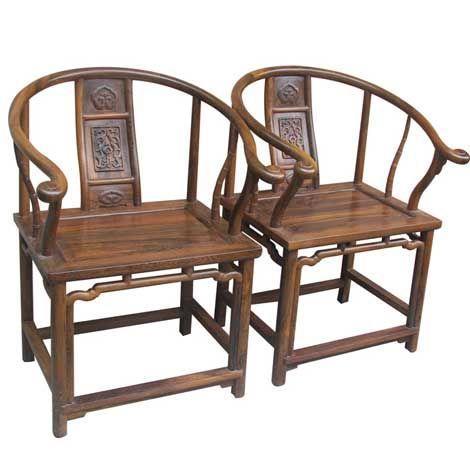The term Asian furniture, or sometimes Oriental furniture, refers to a type of furniture that originated in the continent of Asia. Sometimes people also think of Asian furniture as a style of furniture that has Asian accents. With assimilation with western culture, the term can also expand to modern Asian furniture.
Southeast Asian furniture
Europeans began to receive and collect Asian furniture in the 18th century. Southeast Asian furniture such as Thai, Vietnamese, Indonesian, Javanese, and Balinese furniture are now becoming more prominent and appreciated. Other Asian furniture such as South Asian and Indian are also becoming more popular in interior decorating. There is also the colonial furniture made for the British during their rule in Asia, which includes furniture mostly from India and Myanmar and their reproductions. Southeast Asian furniture is usually dark brown with a lot of Hindu-influence carving. Some may have Polynesian accents such as those from eastern parts of Indonesia.
The term “Asian style furniture” isn’t just reserved for black lacquered chests and painted tables. Asian design philosophies have influenced hardwood furniture even here in the United States.
This kind of Eastern design influence is evident in vertical moon-shaped cuts and irregular joinery techniques, such as seen in our Contemporary Craftsman and Exeter collections, respectively.
A BRIEF HISTORY OF CHINESE FURNITURE
The ancient people in China created the first piece of furniture for people to sit on: the floor mat. Various prototypes of wooden furniture were designed around the sitting mat, such as short-legged wooden desks for the lap, chopping boards with legs, and short tables. Wealthy and important Chinese sat on platforms.

Traditional Chinese Furniture | Source: google.com
Some classic forms of Chinese furniture developed as early as the Eastern Zhou period (770 B.C. – 221 B.C.). Often referred to in the West as “altar tables”, the Chinese developed long, narrow tables to hold musical instruments or to display items of wealth and beauty such as jade, porcelain, or flower arrangements.

Tang Dynasty Tomb Figures | Source: google.com
Furniture now widely regarded as Chinese in style began appearing in the Tang Dynasty (618-907 AD). Furniture height began to rise along with the power and status of the Chinese elite. (In English we speak of being “elevated to a position”.) The furniture makers of the Tang Dynasty began using high round and yoke back chairs for the wealthy elite. Beautiful ceramics and porcelains appeared, such as ceramic horses that are still popular in reproductions.

Chinese Classical Furniture | Source: google.com
The Classical style of Chinese Furniture
The Classical style of Chinese furniture began in the Northern and Southern Song (960–1279) dynasty. Mid-level seating became common. Designing new forms of furniture, such as bookcases, cabinets, benches, and tables. New technical developments in woodworking began with mid-level furniture. Newer and more complex designs appeared, such as rounded backs that were molded to the body. Though at first, only used by official and higher class Chinese, such furniture pieces eventually spread to the homes of all who could afford them. Long-legged beds, tables, towel racks, chairs, and stools became trendy even among the peasants. But mat-level sitting has never been abandoned. In China today, both elevated living and mat level forms are still in use.
Chinese furniture began to develop some of its distinguishing characteristics:
- the use of meditation chairs, large enough to sit cross-legged in
- tall yoke chairs where the feet are to rest on a bottom stretcher
- day beds
- opium beds where one can sit cross-legged and use small tables to eat from or write on while sitting on a mat or platform.
- use of thick lacquer finish
- exotic hardwoods
- detailed engravings and paintings for ceremonial purposes and artistic expression Sacred mountain images, dragons and clouds, birds, and flowers all had specific Taoist connotations.
Ming & Qing Dynasties Furniture
During the Ming (1368 to 1644) and Qing (1644 to 1911) Dynasties, the ban on imports was lifted, allowing for much larger quantities and varieties of woods to be brought in. Denser imported woods allowed craftsmen to execute finer work, including more elaborate styles of joinery. With the rapid rise of the merchant class, imported furniture styles of the West increased the desire for mid-level seating. But at the same time, mat-level seating signaled a return to some more traditional designs.
Ming Dynasty furniture items are beautifully shaped. They combine aesthetic principles and practical considerations into a graceful whole. After the fall of the corrupted Ming ruling house in 1644, China again flourished under the benevolent rule of the early Qing emperors. While early Qing furniture-makers generally held to classic patterns, a tendency towards refinement emerges correlating to that which permeated all of the decorative arts. Qianlong’s fascination with antiquity stimulated archaistic decoration and styles in furniture design. Qing-style furniture is more angular in form, and the surfaces are often elaborately decorated.

Asian Furniture inspired Interior Display | Source: google.com
With influences ranging from Chinese to Tibetan, Japanese, and even French, there is a great deal of diversity available to designers and DIY enthusiasts looking to incorporate Asian home decor and furniture into space.
You will discover that many of these styles originated centuries ago and have evolved over the years to be perfectly fit for your home. Simply check out our other articles for more inspiration.
Want to customize your furniture? Simply check out Kaliuda Gallery. As a trusted reputable high-quality solid furniture factory in Bali – Indonesia. We strive to give the best shopping experience to our clients. Our master craftsmen are ready to design and build the perfect furniture and home decor that you need. Leave your worry and start by browsing our curated ready stock here.